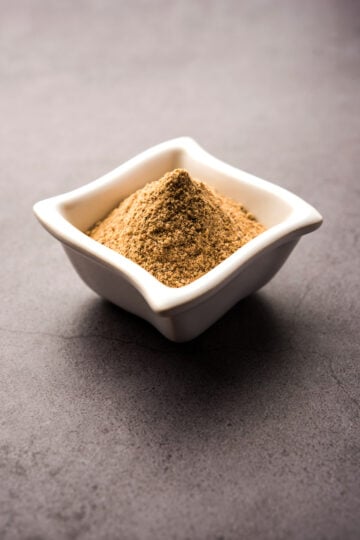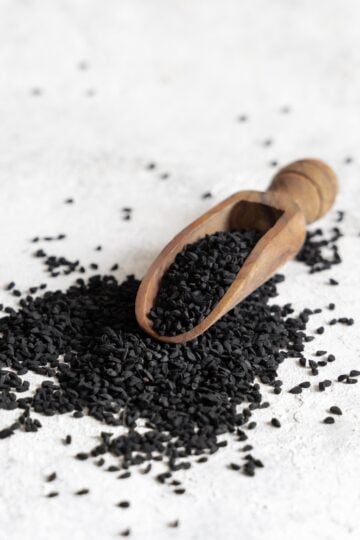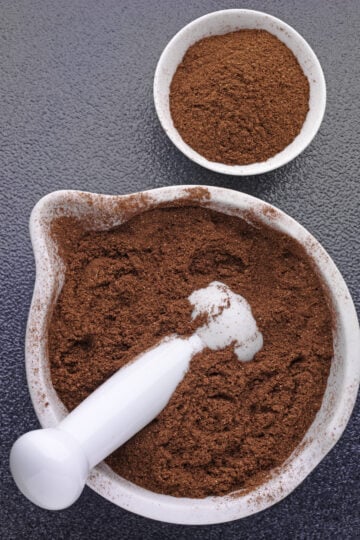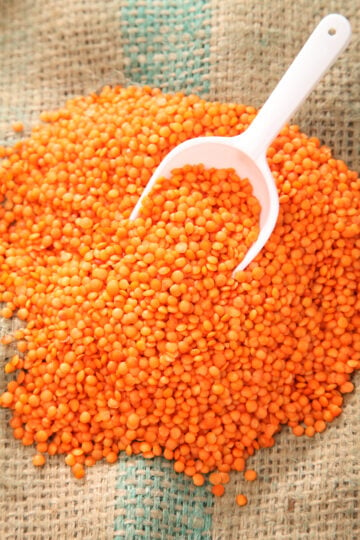
Moth dal is a hardy pulse native to the arid regions of Rajasthan. Small, brown, and nutrient-dense, it grows in dry soil where few other crops can survive. Its ability to withstand heat and drought has made it a dependable source of protein and fiber for centuries.
In Rajasthan and parts of Gujarat, moth dal is used in everyday cooking — from simple khichdi and matki dal to traditional meals served with bajra roti. Valued for both its nutrition and adaptability, it remains an essential ingredient in desert farming and cuisine.
What Is Moth Dal?
Moth dal, also known as matki or dew gram, is a small, brown legume native to India and particularly suited to the dry climates of Rajasthan and Gujarat. Its scientific name is Vigna aconitifolia and is prized for its hardiness, able to grow in minimal rainfall and poor soil where most pulses cannot survive.
When split and skinned, it takes on a pale yellow color and cooks quickly, making it ideal for everyday meals. Beyond Rajasthan, moth dal is also popular in Maharashtra, Haryana, and parts of South India, where it forms the base for dals, curries, sprouts, and wholesome khichdis. Valued for its high protein and nutrient content, it remains one of India’s most sustainable and regionally important pulses.
Quick Facts
- Scientific name: Vigna aconitifolia
- Common names: Moth bean, Matki, Dew bean
- Origin: Rajasthan, India
- Grows best in: Hot, dry, semi-arid climates
- Protein content: About 22–24%
- Rich in: Protein, fiber, iron, calcium, and B vitamins
- Typical dishes: Matki dal, Khichdi, Bajra roti

Split Moth Dal; pale yellow, protein-rich lentils from India’s arid regions, known for their nutty flavor and quick cooking time.
Protein for the People
In Rajasthan’s dry heartlands, moth dal has been a steady source of strength for generations. Rich in plant-based protein, it provides nourishment in places where dairy and meat are less common. Its resilience in harsh climates makes it both a vital crop and an everyday meal.
From rural farms to urban kitchens, moth dal continues to sustain families with simple, dependable nutrition. It endures as a pulse that nourishes body and spirit alike.
A Dish That Changes With the Map
Across India, moth dal takes on new flavors with every region. In Rajasthan, it’s slow-cooked into hearty curries or matki dal, often paired with bajra roti and a drizzle of ghee for comfort and strength. In Maharashtra, it turns into matki usal; lightly spiced and served with poha or pav. In Gujarat, it’s mixed with moong dal for balance, while in Haryana, it’s often sprouted and tossed into salads or stir-fries.
Every state gives it a distinct identity, some make it rich and spiced, others keep it simple and rustic. Yet wherever it’s cooked, moth dal remains tied to nourishment and resourcefulness, reflecting the land and the people who grow it.
Affordable, Accessible, Essential
What makes moth dal so important isn’t luxury, it’s reliability. In regions where rainfall is scarce and resources are limited, it remains a dependable source of daily nutrition. It cooks quickly, stores well, and delivers steady energy, making it a constant presence in both rural and urban homes.
From desert villages to city apartments, moth dal keeps finding its way to the plate. It’s the food people turn to when they need something that simply works, essential in every sense of the word.
What It Tastes Like
Moth dal has a mild, earthy taste with a hint of nuttiness. Its subtle flavor easily absorbs spices like cumin, garlic, and turmeric, making it versatile for both simple curries and spiced dishes. Cooked or sprouted, it delivers a grounded, wholesome depth that feels naturally comforting.

Moth Dal: Nutritional Value (Per 1 Cup Cooked)
- Calories: 230 kcal
- Protein: 14 grams
- Carbohydrates: 36 grams
- Dietary Fiber: 6 grams
- Fat: 1 gram
- Iron: 3 mg (about 15% of daily value)
- Folate: 180 mcg (about 45% of daily value)
- Magnesium: 55 mg
- Potassium: 370 mg
Note: Values may slightly vary based on preparation method and whether it’s split or whole dal.
Health Benefits That Actually Matter
- High in Protein
Moth dal is rich in plant-based protein that may help build muscle, support recovery, and keep you feeling full for longer (Source). - Good Source of Fiber
Its natural fiber content can aid digestion, improve gut health, and help maintain steady energy levels throughout the day (Source). - Heart-Friendly Nutrients
Low in fat and a source of potassium and magnesium, it can support healthy blood pressure and overall heart function (Source). - Rich in Iron and Folate
It may help improve hemoglobin levels and support red blood cell formation, making it beneficial for overall vitality (Source). - Supports Weight Management
With its balance of protein and fiber, moth dal can promote satiety and help manage appetite in a balanced diet (Source).
Potential Health Risks
- Digestive Discomfort
Eating large portions of moth dal, especially if not soaked or cooked well, may cause gas or bloating due to its fiber and complex carbohydrates (Source). - Excess Uric Acid
Frequent overconsumption may raise uric acid levels in some individuals, potentially aggravating gout or kidney-related issues (Source). - Allergic Reactions
Though rare, some people sensitive to legumes may experience mild stomach discomfort or skin irritation after eating moth dal (Source). - Anti-Nutrients
Raw or undercooked lentils contain compounds like phytic acid that can hinder mineral absorption. Proper soaking and cooking help reduce these effects (Source). - Moderation Is Key
When eaten in reasonable amounts as part of a balanced diet, moth dal remains a safe, nourishing, and sustainable source of plant protein.
FAQs
Is moth dal the same as matki?
Yes. Moth dal and matki refer to the same legume (Vigna aconitifolia), commonly used in Rajasthani and Maharashtrian cooking.
Can moth dal be eaten daily?
Yes. When properly soaked and cooked, it’s safe for daily meals and provides steady plant-based protein and fiber.
Is moth dal good for weight management?
It may help support weight control, as its high protein and fiber content promote fullness and reduce unnecessary snacking.
Can moth dal increase uric acid?
Excessive intake may raise uric acid levels in some individuals, so moderation is recommended for those with gout or kidney concerns.
What’s the best way to cook moth dal?
Soak it for a few hours, then pressure cook until soft. Add a tadka of cumin, garlic, and turmeric for flavor and easier digestion.
Is sprouted moth dal healthy?
Yes. Sprouting enhances its vitamin and mineral content, making it lighter and easier to digest.
The Quiet Hero of the Indian Plate
Moth dal may not get the attention of dishes like garlic butter chicken, mutton curry, or chicken ruby, but it’s no less essential. It’s food that’s steady, nourishing, and quietly dependable.
So the next time you enjoy it with bajra roti or cumin rice, with a little spiced lemon pickle on the side, remember — you’re tasting more than just a lentil.
Learn More About Moth Dal
Wikipedia — Moth Dal (Vigna Aconitifolia)
A comprehensive overview of moth dal’s (Vigna aconitifolia) history, describing its botanical background, traditional uses, cultivation, and nutritional value.






Have a question or something to share? Leave a comment below!